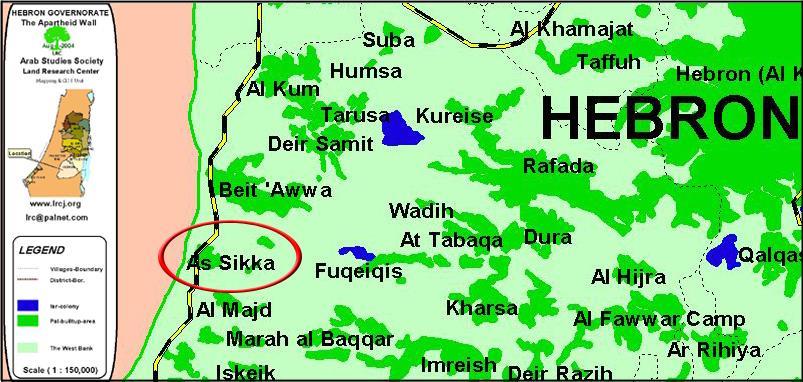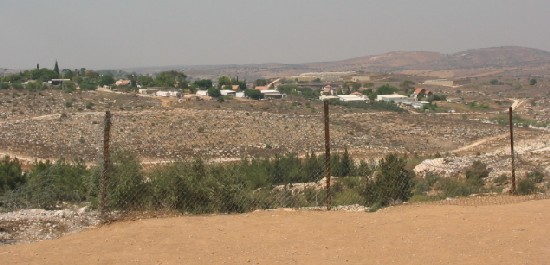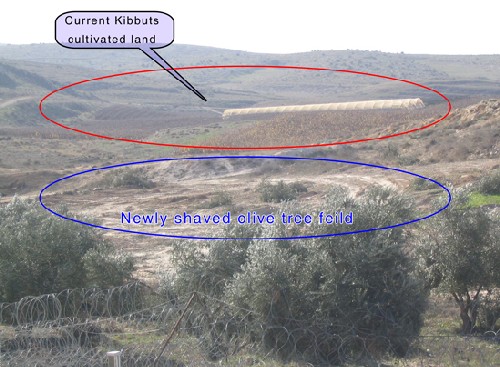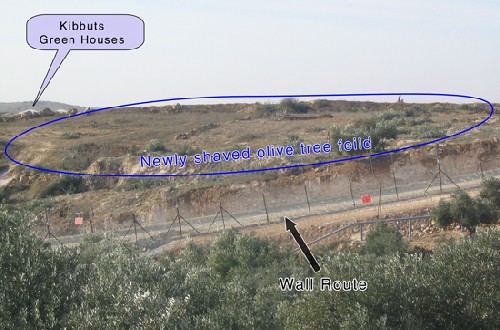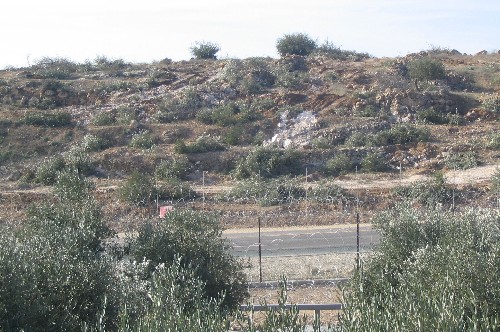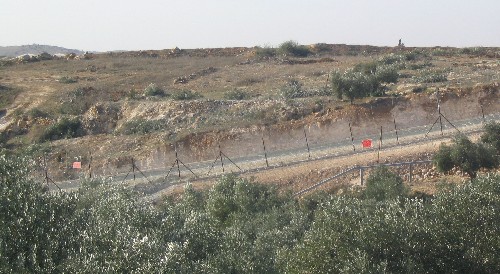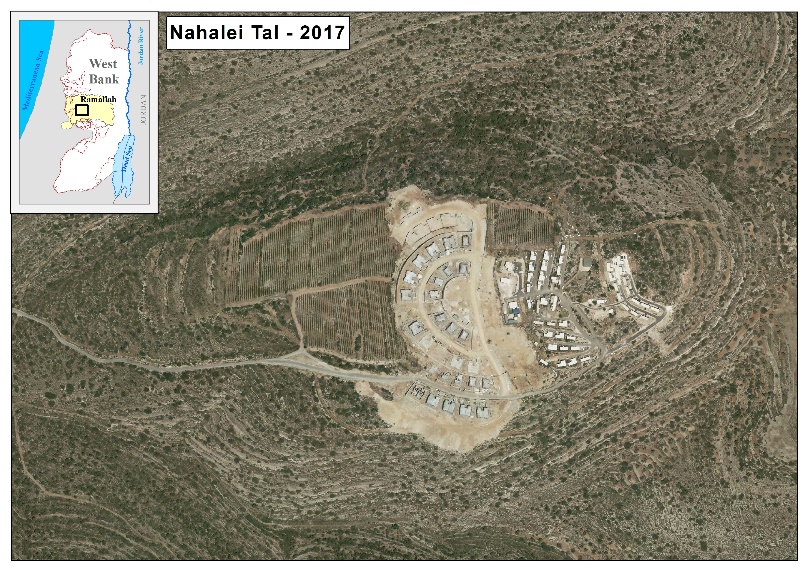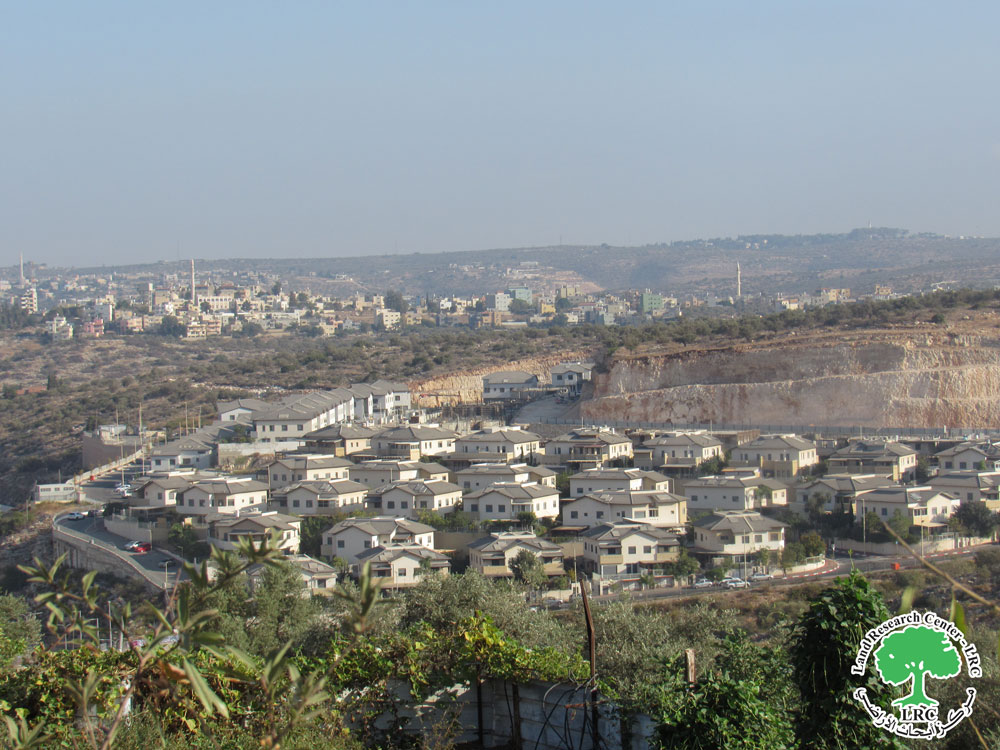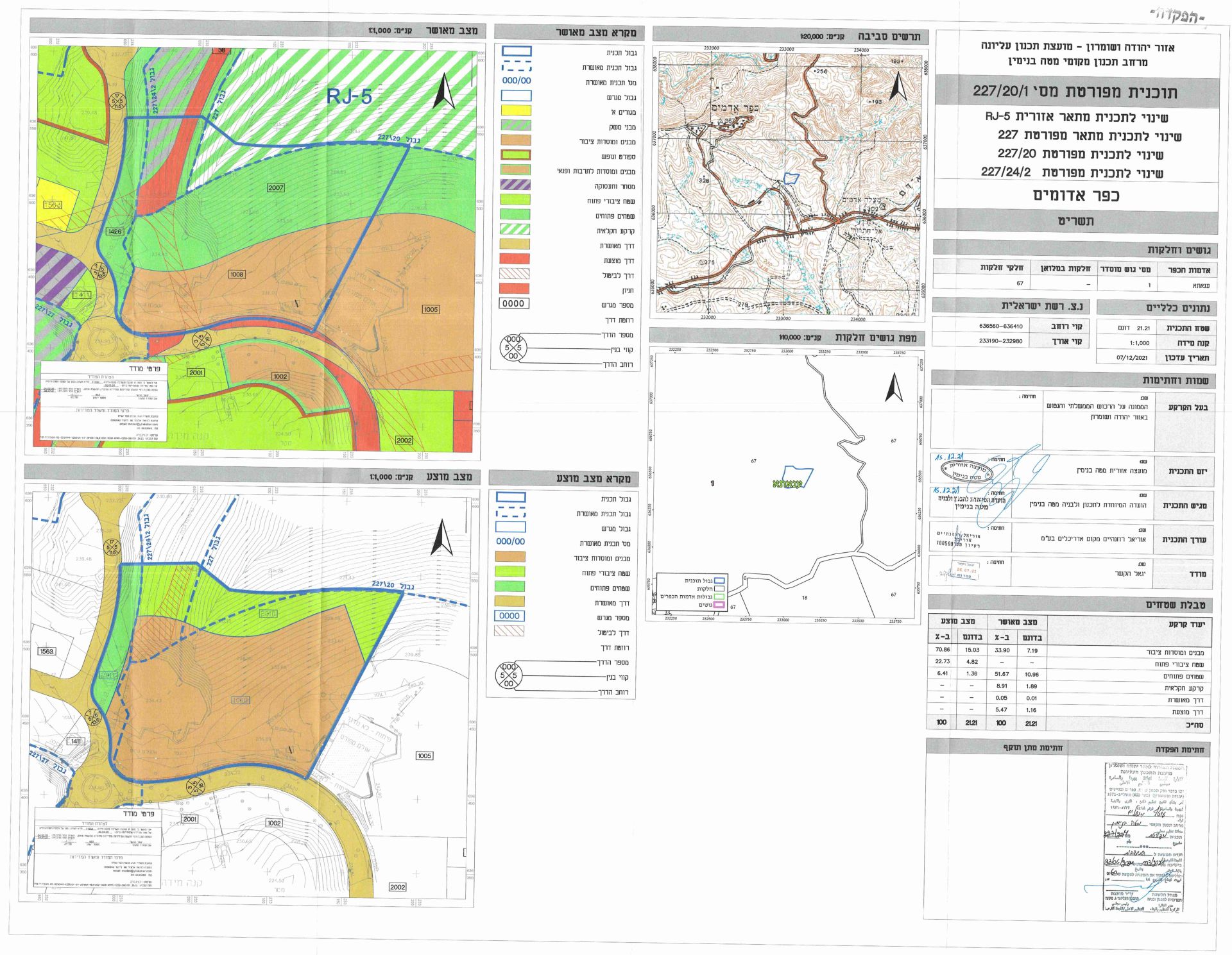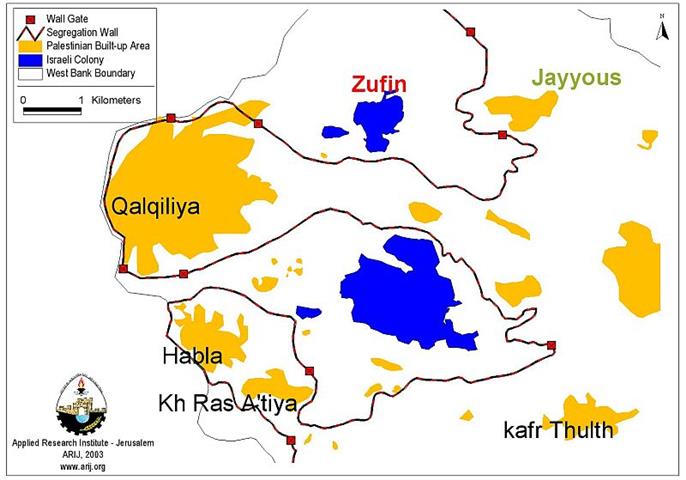Under the pretext of shaving lands for security, the Israeli occupation forces cut on January 2nd, 2006 not less than 400 olive trees planted in the lands separated behind the route of the Segregation wall to the west of As Sikka village in Hebron district.
The village of As Sikka is located about 20 km to the southwest of Hebron city on the Armistice Line (Green Line). It has the population of 750 people, mostly working in agriculture. See Map 1
Location of As Sikka
The Israeli army personnel who started to cut the trees using sawing machines at 8 am on January 2nd, 2006 targeted all the trees over the age of 15 years in Khallet As Sikka and Joron Al Araneb. The trees belong to the families of Ihsheish, Abu Samra, Abu Eid, Iqteit and Ihribat. See photo 2
As Sika- Hebron: olive trees cut behind the route of the Wall – Photo courtesy of LRC.
In an interview with LRC field worker, the head of As Sikka village council, Mr. Najib Jawa'da said that the killing of the trees aims at confiscating and annexing agricultural lands into Kibbuts Sheqev which was built over the Arab destroyed village of Um Ash Shaqaf. He stressed that during the last olive picking season in October, 2005, the Israeli army issued farmers passing permits to access their lands located behind the Wall. See photos
Kibbuts Sheqev to the west of As Sika village- Photo courtesy of LRC
He added that the local people are concerned that the on going land razing and trees uprooting process might hit other areas planted with thousands of olive trees and planted in about 300 dunums of land separated behind the Wall or in a strip of land at the depth of 100 meters from the eastern edge of the Wall. These concerns are highly felt because of continuous threats by the Israeli army officers to commit a big massacre against trees if security situations are necessary.
Last week, the Israeli army broke into a number of houses in the village of Deir Al Asal Al Foqa located about two kilometers to the south of As Sikka under the pretext of searching for stolen Wall fences. Local sources indicated that this break in operations which were carried out under the aforementioned pretext might be used as a cover for destroying an additional number of trees in the western and eastern banks of the Wall in that area.
As Sikka and the Wall
On the 2nd of September, 2004, the Israeli government decided to start work on the Segregation Wall in the areas to the west of Hebron, including the village of As Sikka. In this area, the wall has been built of barbed wires and fences at a depth of 100 meters from the Armistice Line (Green Line) inside the Palestinian territory.
More than 600 dunums of fertile agricultural lands were segregated behind the Wall in the section between Beit Awa village and Beit Mirsim village in the western part of the district of Hebron. The segregated lands are considered the main source of living for Palestinian families, especially at the time of military closure, economic punishment and movement restrictions. See photos 5&6
As Sika- Hebron: Threatened olive orchards to the east of the Wall route – Photos courtesy of LRC
Before 1948, As Sika land area was 1200 dunums, about 80% of which were forcibly annexed to Israel. From the remaining area, the total of 80 dunums have been separated behind the Wall or destroyed under its path.
It is worth mentioning that according to the Israeli army's 'revised' Wall map of February 20th, 2005, the total length of the Wall west of Hebron governorate is 80 km. The total land area separated behind the Wall is 41.6 km, while the total land area destroyed under the route of the Wall is 8 km. Both land areas are equal to 5 % of the total land area of the district.
Prepared by
The Land Research Center
LRC


